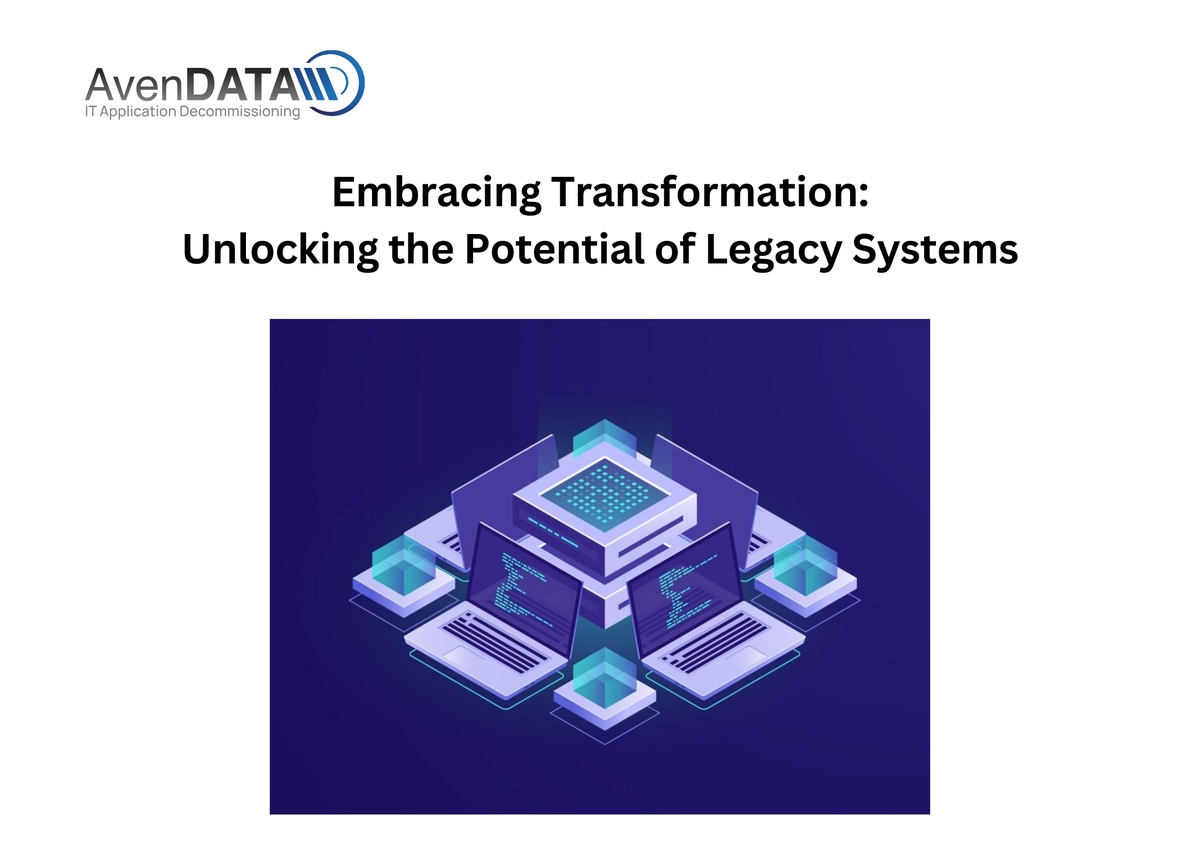Introduction: Legacy systems have long been considered the outdated relics of the past, often perceived as barriers to innovation and progress. However, it’s time to challenge this perception and recognize the untapped potential that lies within these systems. In this blog, we explore how organizations can embrace transformation and unlock the hidden value of their legacy systems, paving the way for innovation, efficiency, and sustained success.
Reassessing Legacy Systems: To unlock the potential of IT legacy systems, organizations must first reassess their value and capabilities. Instead of viewing them as obstacles, consider the following perspectives:
a. Institutional Knowledge: Legacy systems often contain valuable institutional knowledge and insights that have been refined over time. This expertise can provide a competitive advantage by enabling organizations to make informed decisions, anticipate customer needs, and optimize processes.
b. Stability and Reliability: Legacy systems, though built on older technologies, have a proven track record of stability and reliability. By preserving and optimizing these systems, organizations can ensure uninterrupted service delivery, build customer trust, and maintain a competitive edge.
c. Integration Capabilities: Legacy systems are often deeply integrated with other applications and processes within an organization. This integration capability can be leveraged to seamlessly connect with new technologies, enabling a gradual and cost-effective modernization process.
Modernizing in Phases: To embrace transformation, organizations can adopt a phased approach to modernizing their legacy systems. This approach allows for a gradual transition, minimizing disruption and maximizing the value derived from existing investments. Key steps in the modernization process include:
a. Assessing Modernization Needs: Identify areas where legacy systems are hindering business growth or efficiency. Determine the specific functionalities or components that require modernization and align them with strategic objectives.
b. Defining a Modernization Strategy: Develop a comprehensive strategy that outlines the timeline, goals, and resources required for modernization. Consider factors such as budget constraints, risk mitigation, and the impact on existing operations.
c. Prioritizing Modernization Efforts: Prioritize the functionalities or components that will yield the most significant benefits when modernized. This may include customer-facing applications, backend processes, or data management systems that have a direct impact on business outcomes.
d. Leveraging Hybrid Solutions: Rather than discarding legacy systems entirely, embrace hybrid solutions that combine the strengths of both legacy and modern technologies. This approach allows for a seamless integration of new capabilities while preserving the core functionality and institutional knowledge of legacy systems.
Implementing Agile Development: Adopting agile development methodologies can greatly facilitate the modernization process of legacy systems. By breaking down the modernization effort into smaller, manageable tasks, organizations can iterate, test, and deploy updates more efficiently. Agile development enables faster response times, increased collaboration, and a higher level of adaptability to evolving business needs.
Investing in Training and Change Management: Successful transformation requires investing in training and change management initiatives. Empower employees with the necessary skills and knowledge to embrace new technologies and processes. Communicate the benefits of modernization, address concerns, and foster a culture of continuous learning and adaptation.
Ensuring Security and Compliance: As organizations modernize their legacy systems, it is crucial to prioritize security and compliance. Implement robust cybersecurity measures, regularly update software, and conduct thorough vulnerability assessments. Ensure compliance with industry regulations and data protection laws to safeguard sensitive information and maintain trust with customers.
Conclusion: Legacy systems should no longer be viewed as barriers to innovation, but rather as untapped opportunities for organizations to embrace transformation. By reassessing the value of legacy systems, adopting a phased modernization approach, implementing agile development methodologies, investing in training and change management, and prioritizing security and compliance, organizations can unlock the potential of their legacy systems. Through this transformation, organizations can drive innovation, improve efficiency, and position themselves for sustained success in the dynamic and ever-evolving business landscape. Embrace the power of transformation, and unlock the hidden potential within your legacy systems.
#avendata #legacysystems #legacysystem #itsystems #itlegacysystems


No comments yet